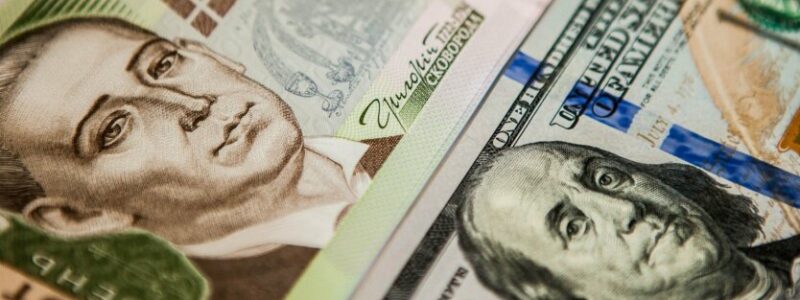
The official exchange rate of the national currency may weaken to the level of 40.00-40.50 UAH/$1 in the summer, said Nikita Mishakov, head of interbank operations at PrivatBank, while OTP Bank predicts that the hryvnia will not fall below 40.20 UAH/$1 in the summer.
“But I do not think that the National Bank, having substantially replenished foreign exchange reserves, will allow a rapid devaluation. Although the NBU plans to devalue the hryvnia gradually. As far as I remember, they promised to devalue up to 10% this year,” he said in a comment to Interfax-Ukraine.
Mishakov believes that the package of currency restrictions easing announced by the NBU on May 3 will put some pressure on the national currency starting from the end of last week or this week.
“My personal opinion is that I see the exchange rate in June at around 40.00 UAH/$1, 40.50 UAH/$1, maybe. But I think that over time, as the harvest season begins, with exports threatened, I think it will adjust to 39.50 UAH/$1,” the head of the interbank operations department shared his expectations.
Mishakov noted that, in his opinion, the exchange rate corridor will be within the current level, close to 40.00 UAH/$1, with fluctuations in both directions of about 50 kopecks.
“Liberalization will result in the need to increase the NBU’s foreign exchange interventions to maintain the stability of the hryvnia exchange rate, but this will not cause additional threats to macro-financial stability,” said Inna Provotar, head of management accounting and business analysis at OTP Bank.
“Exchange rate fluctuations are possible, but within acceptable limits. In summer, we do not expect the official exchange rate to exceed 40.2 UAH/$1. At the same time, there is a high probability that the rate will rise to 40.7 UAH/$1 by the end of the year. That is, to the level that the Ministry of Finance of Ukraine has included in the budget for 2024,” she said.
Sergiy Kolodiy, Chief Macroeconomic Analysis Officer at Raiffeisen Bank, noted that the package of currency restrictions easing will increase the structural deficit in the interbank market in the short term, but at the same time improve the business environment and solve problems with servicing external loans. The announced currency liberalization measures may increase the inflow of foreign currency in the medium term, the banker believes.
However, unlike his colleagues who expect the national currency to devalue, Kolodiy admits that the foreign exchange market will see a seasonal strengthening of the hryvnia due to the central bank’s wide scope for intervention, given the rather high level of international reserves.
“The NBU has enough reserves to cover the structural deficit and will use them for this purpose. Therefore, we will not be surprised by the slow seasonal revaluation of the hryvnia as a clear signal to the market about the ability to maintain currency stability,” he emphasized.
The banker also said that, according to Raiffeisen Bank’s estimates, currency liberalization was included in the regulator’s January macroeconomic forecast, which corresponded to an additional $5.6 billion of currency outflow.
“The estimate of $5.5 billion recently announced by the regulator’s representatives is very close to our calculations,” he summarized.
“Currency easing is aimed at revitalizing and stimulating business, which should ultimately lead to an increase in business activity and, consequently, GDP. The dynamics of the exchange rate will continue to depend on the assistance of international partners, the situation at the front, business activity and public sentiment,” informed Serhii Kucheriavyi, Director of Liquidity and Securities Control Department of Kredobank.
All the bankers emphasized that the level of international reserves is sufficient for a more “soft” monetary policy and do not see any significant risks to exchange rate stability.
As reported, on May 3, the NBU announced the largest package of currency restrictions easing for businesses since the beginning of the full-scale war, which includes the abolition of all currency restrictions on imports of works and services, the ability of businesses to repatriate “new” dividends, and the ability to transfer funds abroad under leasing and rent.
In addition, new steps in currency liberalization include easing restrictions on the repayment of new foreign loans and interest on “old” foreign loans, as well as easing restrictions on the transfer of foreign currency from representative offices to their parent companies.
On May 7, the Cabinet of Ministers of Ukraine repealed Resolution No. 153, which restricted payments for imports of goods and services, and on May 8, the official hryvnia exchange rate began to gradually decline.
In total, it weakened by 37 kopeks over the past week, including a 17 kopek drop to 39.7206 UAH/$1 last Friday. In the cash market, the dollar also rose in price last week: by about 12 kopecks to 39.95 UAH/$1, including 6 kopecks on Friday.
The National Bank’s net sales of dollars increased to $533.4 million from $507.8 million last week.
In April, Ukraine’s international reserves decreased by 3.1%, or $1.4 billion, to $42 billion 399.5 million. On April 25, the NBU raised its forecast for reserves at the end of this year to $43.4 billion from $40.4 billion and to $44.3 billion from $42.1 billion at the end of next year.